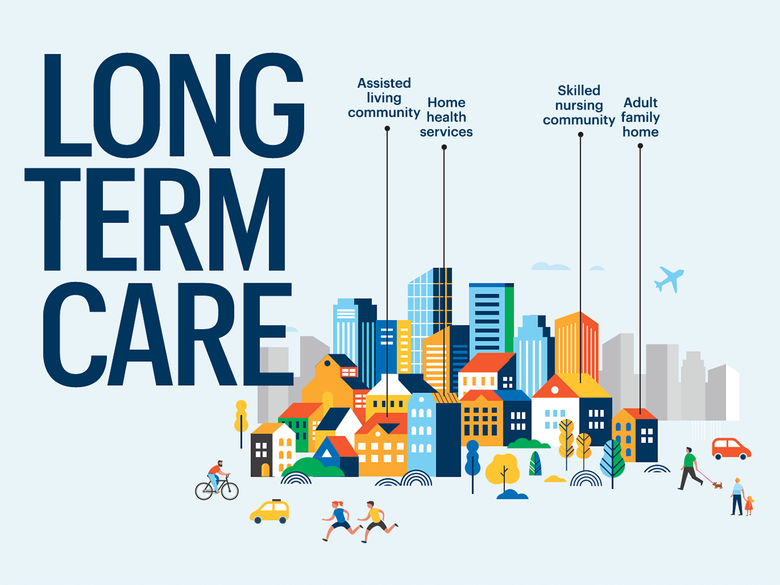
Help Wanted: Four Million-plus Workers to Care for an Aging America
Fact: the U.S. birth rate is declining. If the birth rate in 2008 had held steady through today, we would have an additional 5.8 million children in our country.
Fact: by 2034, for the first time in U.S. history, Americans over 65 years old will outnumber Americans under 18. This will accelerate the need for people to take care of this aging population.
Fact: an acute shortage of home care workers already exists, and without aggressive intervention by federal and state governments as well as the corporate sector, it will get much worse. As many as 4 million additional home care workers will be needed in the next decade alone, and 12 to 20 million additional Americans who are aging will need care.
Fact: the average hourly wage for a home care worker is about $12 per hour, and one in six lives in poverty.
Against this backdrop, last month a group of policy experts came together to discuss one of the most important – and all too often neglected – issues facing the U.S. today. They participated in a webinar, sponsored by the Aspen Institute, entitled, Valuing Care: Principles for a Post-Pandemic Care Economy.
Helping set the state for the discussion was Heather Boushey, a member of the Council of Economic Advisers in the Biden Administration, a Co–Founder of the Washington Center for Equitable Growth, and a former economist with the Center for American Progress, the Center for Economic and Policy Research, and the Economic Policy Institute.
“We knew that the care economy was in trouble long before the pandemic hit,” Boushey said. “Too few workers have access to paid leave, too few have the right to paid sick days, and too many struggle to afford the kind of quality care their loved ones need. We know that without time to care, families cannot address the day-in, day-out conflicts between work and family. And now these challenges have been unmasked for all to see. This past year has taught us all across the nation how the care economy is the foundation of our economy.”
President Biden, as part of his American Jobs Plan, has proposed $400 billion in home care. These expanded Medicaid dollars would increase home and community-based care jobs and help improve the salaries of home care workers, provide them with more workplace protections, and help them gain access to unions, among other things. Boushey said providing better working conditions – including higher salaries – would result in a “positive feedback loop” that would improve the lives of workers, clients, and the economy in general.

By 2034, for the first time in U.S. history, Americans over 65 years old will outnumber Americans under 18.
“We had long known the answer to the twin crises of the lack of good care and the lack of good jobs,” she said. “Investing in the care economy creates a positive feedback loop. Those who need to work outside the home can find care, while those who need to provide that care can find work and good jobs. We also know from the research evidence that quality care goes hand in hand with fair wages.”
Adria Powell is the President and CEO of Cooperative Home Care Associates, the nation’s largest employee-owned provider of home care workers. She says workers have faced a number of problems during the pandemic, including fears of personal risk, managing increased caseloads in some instances while struggling to care for their own families, and low wages.
Unlike many workers, home care workers, of course, were unable to work remotely – you can’t feed a client or change their bedsheets over the Internet. “While the majority of this country was going fully remote, we didn’t do that, and we couldn’t do that,” Powell said. “We had to be there. We provide direct services that need to be delivered by human beings, and we had to have workers in clients’ homes, talk to clients about their fears of having workers coming into their homes who have been traveling, potentially on public transportation and they may have been exposed. We had to talk to workers through their fears around going into clients’ homes, where there may be family members who are there, and they don’t know what exposure they’re going to put themselves through.”
One issue that emerged, Powell said, is that some home care workers opted to collect unemployment benefits because they could earn more by staying home than by going to work and putting themselves and their families at risk. The issue of low pay is one that the panelists participating in the webinar returned to time and again.
“My issue is that these jobs are not low-wage work, and they need to be compensated in a way that recognizes the essential services that home care workers are delivering,” Powell said. “I had a home care worker who’s a member of our board stand in my office and share that her coworkers chose not to go to work and collect unemployment because they could earn more, they could be safer, they could stay with their children who were attending school remotely….And she looked me in the eyes and she said, ‘I would earn more staying at home too, but I have to work because who else will be able to take care of my clients if I don’t go? They need me and they have no one else’.”
Tina Tchen is President and CEO of Time’s Up. She formerly served as a lawyer advising companies on gender inequity, sexual harassment, and diversity. She pushed back against critics who say Biden’s proposed $400 billion for home care does not qualify as “infrastructure.”
“If you’re going to talk about investing in roads and bridges to get people to work, nobody can get across those roads or bridges if they don’t have caregiving,” Tchen said. “Folks who are trying to build the roads and bridges can’t get to work to do them unless there is caregiving. Caregiving is as essential to our economic infrastructure as roads and bridges or the electric grid is, because it is the mechanism by which we put people to work. We will invest in caregiving jobs, in jobs that actually can’t be shipped overseas, and will allow somebody else to go to work. So, it is doubly stimulative to the economy.”
But who should be responsible for paying for caregiving? Tchen said she has seen a sea change in public opinion in response to this question. As recently as 2008, she said, people generally thought individuals were responsible. Today, there is an overwhelming sense that government has a key role to play. \

“I have seen employers come to the table in the last year in ways I have never seen before,” she said. “Because, all of a sudden, these CEOs, they’re stuck with their kids at home. They can’t just go up to the office and ignore what is happening at home. They’re living it themselves. They’re watching their senior women leave the workforce because they can’t manage it. And you’ve got manufacturers telling the Wall Street Journal, as they did this last summer, half of the manufacturers in Philadelphia said they could not field a full day of work on their manufacturing floor because their workers were at home with caregiving responsibilities....So, this is a real turnaround and a shift.”
It is far from known how much of President Biden’s proposed American Jobs Plan will become law this year, whether Congress will sign off on $400 billion for caregiving, or even precisely what that plan would look like. But participants in the Aspen Institute webinar seemed confident that the clarion call for more investments in home care and home care workers is a genie that cannot be put back in the bottle.
“We are on the precipice of a once-in-a-generation opportunity to really make a transformative change in the care infrastructure and economy to benefit all of us,” said Dorian Warren, President, Community Change and Co-Chair, Economic Security Project. “So there’s lots of cases to be made. The thing that everybody here who’s listening or watching can do is, raise your voices and create a strong, bold echo chamber that cannot be ignored when it comes to the care economy.”

